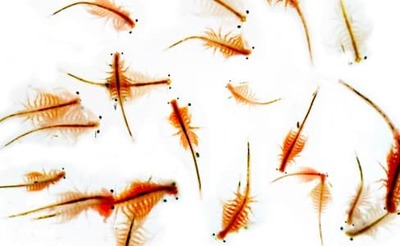Implications of a Changing Ecosystem: The Effect of Environment and Life Stage on Brine Shrimp
- Student
- Madeleine Girgis
- College(s)
- College of Science
- Faculty Advisor
- Gary Belovsky
- Class Year
- 2020

This study examined the effect of varying environmental factors of temperature, salinity and phytoplankton availability of pennate Bacillariophyta on brine shrimp (Artemia franciscana) grazing rates at different shrimp life stages. Brine shrimp and Bacillariophyta comprise two components of the food web in the Great Salt Lake, Utah (USA) and populations of both are subject to fluctuation as climate changes.
In an effort to project the resulting brine shrimp grazing rate in varied environmental conditions, each trial of this experiment lasted 1 hour and occurred in 50 mL test tubes at a specific temperature, salinity, and food concentration. Grazing rate was represented by the change in initial and final Bacillariophyta concentration.
Overall, grazing rates were significantly higher with progressive life stages, increased temperature, increased food concentration, and decreased salinity. The results of this study may direct possible grazing rate outcomes of temperature fluctuations, changes in lake salinity, and shifts in pennate Bacillariophyta abundance, to predict the stability of brine shrimp populations.